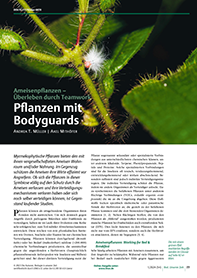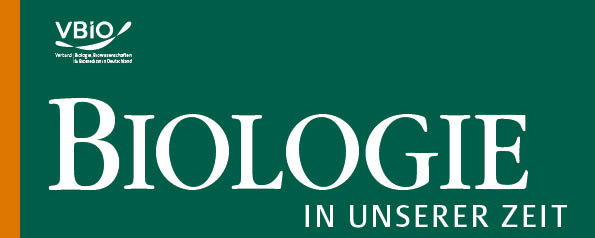Myrmecophytes: Plants protected by bodyguards
DOI:
https://doi.org/10.11576/biuz-6870Keywords:
Ameisenpflanzen, Herbivorie, pflanzliche Verteidigung, Symbiose, TococaAbstract
Mutualistic ant-plant-interactions with myrmecophytes are found in tropical regions of the world. They are always based on the provision of nesting sites (domatia) by the plant and may be accompanied by the additional provision of food (extrafloral nectar and/or food bodies). In return, the ants defend the plant against other organisms, especially herbivores. In addition, some ant plants – such as Tococa – benefit from an increased level of nitrogen introduced by the ants, when they are colonized by ants. Thus, in addition to reducing feeding damage, at least some of the ant species can positively influence the general metabolism and growth of ant plants. If feeding damage occurs despite the presence or because of the absence of protective ants, myrmecophytes can activate typical plant defence reactions such as the release of volatile organic compounds (VOCs).

Downloads
Published
How to Cite
Issue
Section
License
Copyright (c) 2023 Andrea T. Müller, Axel Mithöfer

This work is licensed under a Creative Commons Attribution-ShareAlike 4.0 International License.

